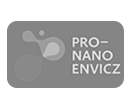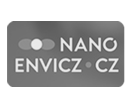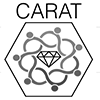Instrumentation of Department of Molecular Electrochemistry and Catalysis
A: Major Equipment
Equipment for Standard and Advanced Electrochemical Techniques
Potentiostats / galvanostats
- 2x PGSTAT101, PGSTAT204, PGSTAT30 with FRA module for EIS measurements (Metrohm AUTOLAB, Switzerland),
- current booster BSTR10A (Metrohm AUTOLAB, Switzerland)
- HEKA PG 690 USB with PotMaster 2x90.5 software package (HEKA Elektronik, Lambrecht, Germany)
- PAR 263A (Princeton Applied Research, USA)
- AFP2 (Pine Research Instrumentation, USA)
- several polarographic analyzers PA3 and PA4 (Laboratorní přístroje Praha, Czech Republic) with xy recorder (Laboratorní přístroje Praha, Czech Republic)
Electrode units
- one 663VA stand (AUTOLAB Metrohm, Switzerland)
- one rotating disk electrode (Pine Research Instrumentation, USA) and two rotating disk electrodes (Metrohm AUTOLAB, Switzerland)
- several Static Mercury Drop Electrode systems (SMDE, Laboratorní přístroje, Czech Republic)
- dropping mercury electrode, several platinum, carbon and gold electrode, BDDE and home-made amalgam electrode systems
Sonicator
- Sonoplus UW 2070 (BANDELIN, Germany)
Equipment for Spectroscopic Characterization and Analysis
EPR spectroscopy
- CW X-band EPR spectrometer Bruker EMX micro with X-band premium bridge, Bruker Xenon software package, resonator cavities ER 4119HS (high sensitivity) and ER 4104OR-C (optically transparent) (Bruker, Germany)
- CW X-band EPR spectrometer Varian E4
- CW X-band EPR spectrometer MiniScope MS400(Magnettech)
Spectrometer with high measurement sensitivity 8*109 Spins/0,1mT and magnetic field stability 1,5μT/min. Microwave power range standard 100μW - 50mW. Ultra-fast automatic frequency control (AFC). Allows irradiation of samples in the resonator during the measurement using a parallel beam. Microwave frequency counter model FC400.
NMR spectroscopy
- NMR spectrometer Varian Mercury 300
Spectrometer with gradient module Performa I for pulsed field gradient experiments. Probes for liquid NMR: ASW PFG 4 nuclear or broad-band operation (1H, 19F, 15N-31P), ID PFG (1H, 15N-31P).
Infrared spectroscopy (FTIR)
- Nicolet iS10 FTIR spectrometer
Spectrometer equipped with DTGS detector with spectral resolution of 4 cm-1. Attenuated Total Reflectance (ATR) accessory with Si and ZnSe crystals. Air-protecting cuvette on a in the range 400-4000 cm-1, KBr optics.
UV-near IR spectroscopy - Molecular spectroscopy
- UV-vis spectrophotometer UV-1800 (Shimadzu)
- UV-vis diode-array spectrophotometer Ocean Optics STS-UV with deuterium-halogen light source DH-2000, equipped by optical fiber optics and an Inline-TTL-Shutter
- UV-near IR spectrometer Varian Cary 17D spectrometer.
Measuring in the range 300-2000 nm in all-sealed quartz cells (Hellma).
Liquide sample analysis
- Thermo Focus DSQ GC-MS analyser.
Analyser is equipped with a capillary column Thermo TR-5MS (15 m x 0.25 mm x ID 0.25 μm). - Agilent gas chromatograph - Agilent 7820A
Chromatograph is equipped with 50 position injector autosampler
Equipment for Catalytic experiments
- Polymerization autoclave
250 mL Büchi glass double-jacketed polymerization autoclave equipped with a magnetic stirrer. The consumption of ethylene is recorded during the polymerization by a calibrated mass flow meter (Bronkhorst, EL-FLOW) which was controlled by a Bronkhorst High-Tech modular digital readout and control system. - High pressure reactor
100 mL high pressure picoclave Büchi reactor equipped with cyclone 075 agitator with integrated magnetic coupling. Steel vessel with heating jacket and bottom opening 100 ml, 60 bar, 250 °C. - Heidolph Synthesis 1 instrument
Catalytic experiments in liquid phase, 16 parallel reactions, 25 ml reaction glass vessels with PTFE caps, 4 heating zones with individual heat control, Condensation zone allows for refluxing of solvents using chiller. - HF X-Cube flow catalytic apparatus
High pressure, continuous-flow reactor capable of reaching temperatures and pressures up to 200 °C and 150 bar respectively. Two built-in conventional HPLC pumps deliver reagent to a stainless steel, packed cartridge (CatCartTM) surrounded by aluminum heating block. Product mixture is air-cooled before being collected in a vial or flask. - Photoreactor M2 (Penn PhD)
The complete benchtop instrument to accelerate photo-redox catalysis with modular design allows for use with either a 365, 420 or 450 nm wavelengths.
Equipment for air- and moisture-sensitive synthesis
- Argon-vacuum lines and high-vacuum lines equipped for manipulations with compounds using standard Schlenk techniques and all sealed ampoules.
- Glovebox - Labmaster 130 mBraun (oxygen and water vapour concentrations below 2.0 ppm).
- Solvent purification system (PureSolv MD 7; Innovative Technology, Inc.)
B: Available Methods
- Electrochemical Methods
All standard electrochemical methods for fundamental research in aqueous as well as in aprotic (organic) media are commonly used. For example: dc-polarography, cyclic voltammetry, linear sweep voltammetry, differential pulse and square-wave polarography and voltammetry, bulk electrolysis, coulometry, electrochemical impedance spectroscopy. For all measurements, electrodes of various shape and material are available.
- Spectroscopic Methods
- NMR spectroscopy
- EPR spectroscopy
- Fourier transform infrared spectroscopy (FTIR)
- UV-vis spectroscopy
- Gas chromatography (GC)
- Mass spectrometry (GC-MS)
- Combination of different investigation methods with electrochemistry
- In-situcombination of electrochemistry with UV-vis (special spectroelectrochemical cell in UV-vis spectrophotometer UV-1800).
- In-situ combination of electrochemistry with EPR.
- In-situcombination of electrochemistry with UV-vis/EPR.
- Sonoelectrochemistry
- Catalytic experiments
Introduction and development of new (multicomponent) catalytic systems based on transition metal complexes, polymerization, oligomerization of unsaturated hydrocarbons.
- Transition metal complex synthesis
Design and characterization of new transition metal complexes.
C: Auxiliary equipment
- FDM (Prusa i3 MK3S+ printer), resolution up to 0.05 mm (Z-axis, layer height) / 0.01 mm (X- and Y-axes); prints for basic plastic laborathory equipment (incl. tailored electrochemical cells, holders) available from variety of materials (1.75 mm fibers - PLA, PP, Nylon-PA, CPE, PVC, PVDF, ABS, ASA, POM, PC, XT, HIPS, PMMA, TPU, PETG, Clear and others)
- SLA (Anycubic Photon printer), resolution up to 0.01 mm (Z-axis, layer height) / 0.047 mm (X- and Y-axes); special waterproof and precise prints from both transparent and filled resins based on polyurethane acrylate
















